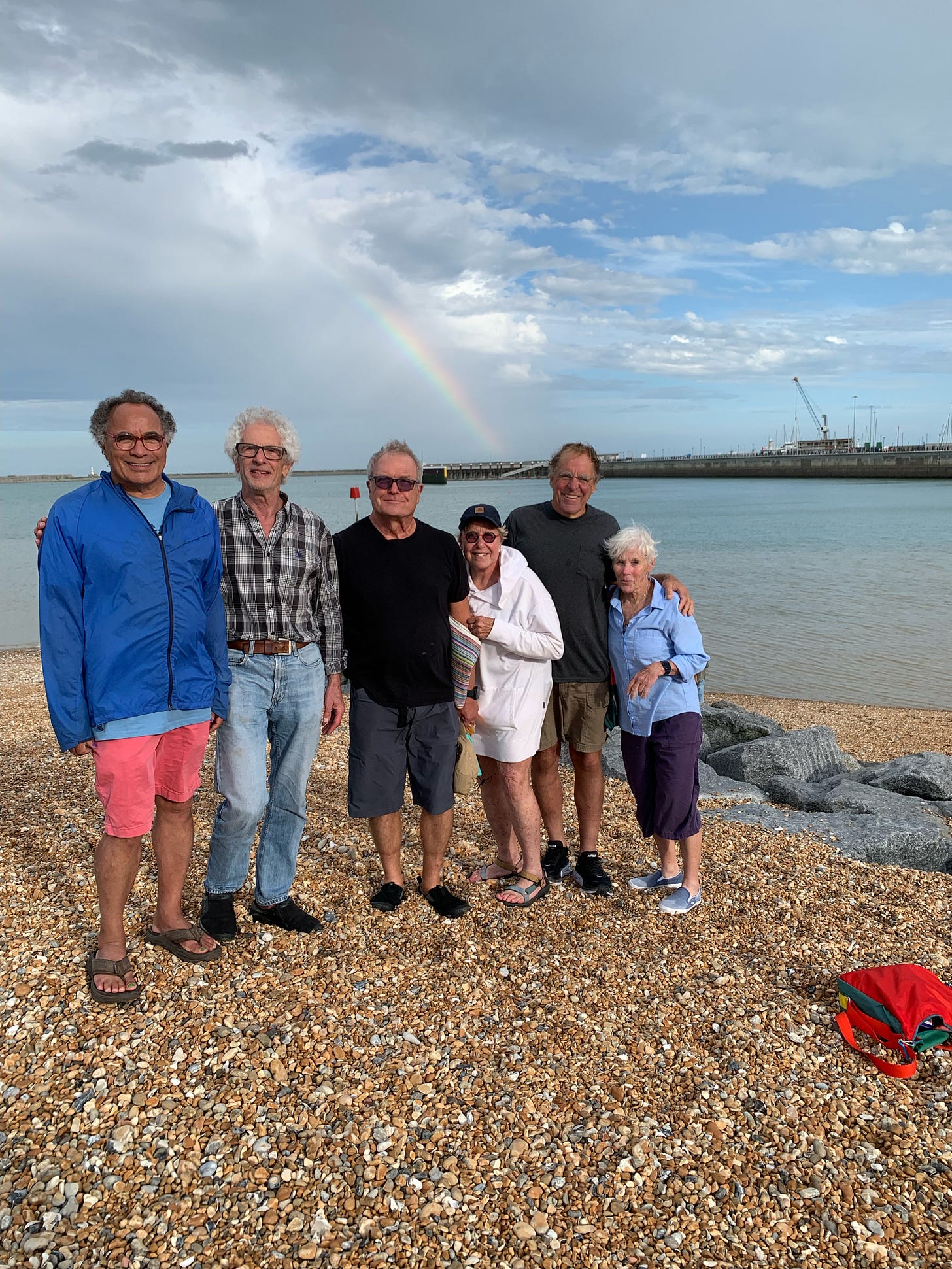My early working life was defined by teamwork. On copy desks I was one member of a crew of editors; we consulted each other, checked each other’s work, argued, kibitzed, joked. When I was the editorial director at Banana Republic, I supervised writers and editors who shared ideas and tasks. When I became a name developer, each project began with a group huddle. One of our collaborative naming exercises involved writing ideas on a piece of paper that got passed around the table, each participant building on the list. As many as a dozen namers might be involved, each of whom brought distinct talents and experiences: a lyricist, a linguist, a poet, and a screenwriter might work together on the same project. (Sometimes the client would insist on sitting in. That was a different sort of learning experience.)
A couple of my favorite work experiences involved complex multimedia projects. In the 1990s I was the writer for a new museum at the old Bartholomew Estate Winery in Sonoma; other cast members included a graphic designer and an exhibit builder. I’d write at home, then come to the site to see my words literally take shape. (The museum is gone now; the information it contained is online.) I had a similar experience in 2019 when Children’s Fairyland, in Oakland, asked me to create the text for an Oakland International Airport exhibit that depicted the history and attractions of the beloved storybook theme park. Again, I had the pleasure of working with 2-D and 3-D designers. (That exhibit is gone, too; here’s what it looked like.)
But that sort of collaborative experience is no longer the norm in my working life, or in the working lives of other people in professions like mine. When I edit, write, or develop names now, I almost always do it alone. I rarely even meet face to face with clients. Except for large-scale, big-budget projects—not my niche—that’s the way it goes now.
I don’t mind working alone. It even has its advantages: uninterrupted thought, lots of freedom. But I often miss those mornings and afternoons with smart, competent colleagues, working together and becoming more than the sum of our professional parts.
Which is why I’m happy about a new project I’m working on.

In the early afternoon on August 16, six members of the “Old Goats” relay team from San Francisco’s Dolphin Swimming and Boating Club finished swimming the English Channel: 21 miles in 15 hours, 10 minutes. That’s impressive but hardly unique: there are many solo and relay Channel swims every year; some are faster, some slower. What makes this successful crossing special is that every member of the team is over 70 years old; the oldest, team captain Duke Dahlin, is 75. Duke swam the Channel solo 20 years ago and had wanted to repeat the experience this year, but cardiac surgery and stent implantation made him reconsider. A relay it would be.
Here’s how a Channel relay works: The first swimmer—in this case Duke—starts on Shakespeare Beach, near Dover, England, and swims toward a boat waiting offshore. The boat, carrying the other team members and their gear, plus the boat crew and one or two official observers from the Channel Swimming Association, charts a course toward France. Swimmers are allowed no gear other than one uninsulated cap, a swimsuit, and goggles. Each team member swims for one hour in a strict rotation, for as long as it takes. In between swims the swimmers try to eat, try to nap, and try to watch the swimmer who’s in the water—especially important at night. (The Old Goats began their swim at 11:30 p.m. British Summer Time.)
I’ve done shorter relay swims (the width of Lake Tahoe, the Maui Channel), so I know how much planning and training are involved. A much longer relay, on a different continent, when you’re over 70 and probably not as speedy as you once were? Deep respect, but include me out.
So that’s one kind of collaboration: athletic teamwork. Here’s where that story intersects with mine: I’m working on a short documentary film about the Old Goats. By “working on” I don’t mean I’m the filmmaker—I don’t have those skills. But I know how to recruit people who do have them, and I have some ideas about shaping the story.
From the Dolphin Club membership—nearly 2,000 people from all over the world, with all kinds of skills—I’ve found amateur and professional videographers and editors eager to volunteer their time to this project. One member donated a large amount of online storage space for photos and video clips. Another did video interviews of the swimmers before they left San Francisco, and will follow up when they return. I’ll try my hand at some interviewing, too.
Our goal, unlike that of the Old Goats, is modest: to preserve the achievement and archive it for present and future club members. It will be as good as we can make it, because we want to honor the accomplishment, but it won’t be slick or fancy, because we’re all volunteers making it up as we go along.
I’m looking forward to learning from my video teammates, and to sharing my own skills. I’m looking forward to collaborating again.
I’ll let you know how it turns out.



